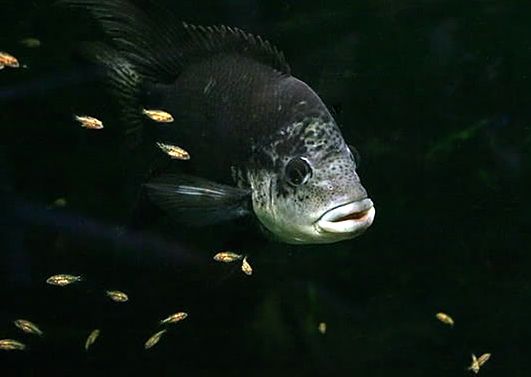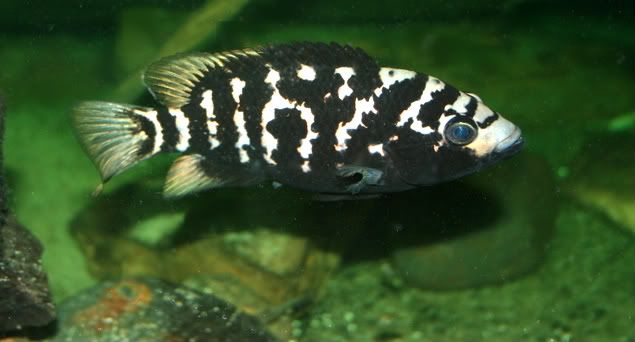The dark color in the dorsal usually indicates female in Nandopsis.
And although yours has developed a more male profile, this is common if a male of that species is not present, and commonly happens that the female may adopt dominant traits.
I had a female Nandopsis haitiensus whose profile and coloration would change to a more male look, over night if the male was removed from the tank.
normally she looked like this

but if the male was removed, she became this

below is a normal female Nandopsis tetracanthus (Cuban) note the dark color in the anterior of the dorsal

below the male
